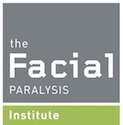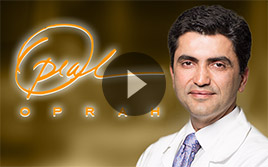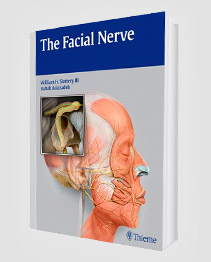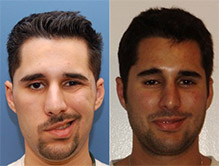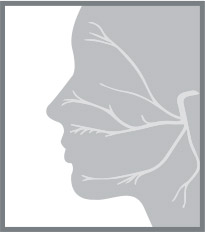Facial paralysis in children is rare. Regardless, parents should keep an eye out for symptoms of facial paralysis in kids. That way, they can address these symptoms before they permanently damage the facial appearance.
In the event that parents find their children are coping with facial paralysis, they need to respond appropriately. At this point, parents should take time to talk to their kids about facial paralysis.
How to Discuss Facial Paralysis in Children
Here are tips to help parents discuss facial paralysis with their children.
1. Consider the Child’s Perspective
Think about what questions a child may ask regarding facial paralysis. Then, conduct research to find answers to these questions.
Common questions that kids may ask about facial paralysis include:
-
- What is facial paralysis?
- Why can’t I move one or both sides of my face?
- Will my facial paralysis symptoms go away on their own?
- Will facial paralysis permanently affect my facial appearance?
- What can I do to treat my facial paralysis symptoms?
Parents don’t have to be facial paralysis experts to support their kids, either. If a child asks a question and a parent does not know the answer, get in touch with a doctor for additional assistance. At this point, a doctor can offer additional insights into facial paralysis.
2. Provide Comfort and Reassurance
There are more than 100 known causes of facial paralysis in children. Regardless of why a child experiences facial paralysis, a parent’s role is to provide comfort and reassurance to him or her at all times.
For parents, tell a child that he or she is loved no matter what happens – and do so frequently. This allows a parent to lay the foundation for a loving relationship with their child. It also increases the likelihood that a child may start to feel comfortable going to a parent to discuss a variety of topics – even their facial paralysis symptoms.
3. Offer Information in Small Doses
Pediatric facial paralysis is a complex topic. As a parent, it is important to educate and inform a child about facial paralysis. At the same time, it is crucial not to overwhelm a child with too much information at once.
Oftentimes, it helps to break up facial paralysis information into small bits. Taking a few minutes each day to explain facial paralysis and the symptoms associated with it may be beneficial for both a child and parent. In this scenario, a parent can provide a few facts and insights about facial paralysis to their child every day. Then, a child can digest facial paralysis information and respond with any concerns or questions.
4. Meet with a Child’s Teacher or School
Children with Bell’s palsy or other forms of facial paralysis can experience symptoms that hamper their facial appearance. In these instances, kids who do not understand these symptoms can tease those who are coping with facial paralysis. This can lead kids with facial paralysis to experience emotional and psychological damage. It can even reach a point where it causes these children to avoid social gatherings with friends and family members, due to concerns about their facial appearance.
For parents, it pays to be proactive relative to facial paralysis in children. If a child experiences facial paralysis that impacts their facial appearance, a parent can meet with a teacher or other school administrators. Then, these administrators can take measures to assist a child dealing with facial paralysis during the school day.
School administrators may offer educational materials to teach their students about Bell’s palsy in children and other facial paralysis topics. Or, they may offer additional encouragement and support to kids coping with facial paralysis. By involving school administrators, parents can get extra help to discuss facial paralysis topics with their children. And, parents and school administrators can work together to ensure facial paralysis information is properly disseminated.
5. Be Clear and Concise
Facial paralysis jargon is unlikely to do a parent or their child any favors. Instead, a parent should define facial paralysis in terms that their child can easily understand.
If a parent is uncertain about different facial paralysis terms, Dr. Babak Azizzadeh of The Facial Paralysis Institute can help. Dr. Azizzadeh is happy to define assorted facial paralysis terms. That way, a parent can use these insights to provide a clear, concise facial paralysis explanation to their child.
6. Use Your Instincts
Ultimately, a parent knows their child better than anyone else. Thanks to parental instincts, any mother or father can determine the best time and place to discuss facial paralysis with a child.
If a parent notices a child seems anxious, for example, it can be best to avoid a conversation about facial paralysis at this time. On the other hand, if a child approaches a parent about their difficulties with smiling or making other facial expressions, this may prove to be an ideal time to begin a dialogue about facial paralysis.
7. Be Patient
There is no timeline to provide a child with information about facial paralysis. Kids of all ages may experience facial paralysis, and much in the same vein, children may learn about facial paralysis at different points in their lives.
The best time to talk to a child about facial paralysis is usually when he or she can fully understand the condition and its immediate and long-term ramifications. If a parent believes that time has not yet arrived, he or she should be patient. In the meantime, a parent can learn about all aspects of facial paralysis. And when the moment arrives to teach a child about facial paralysis, this parent will be ready to do just that.
8. Show You Son or Daughter That There Are Other Children with Facial Paralysis
Most people have never met anyone else dealing with facial paralysis so they feel very alone. Sharing videos of other children with facial paralysis can be very comforting to a child.
Here are a few videos of our young patients with facial paralysis:
https://www.youtube.com/watch?v=Qz6cKxj6_zY
https://www.youtube.com/watch?v=dgyT1XU6Nb8
Preview videos of facial paralysis patients before they are shared with children. Furthermore, be ready to discuss the videos with kids and answer any questions about the videos after viewing.
Why Does Facial Paralysis in Children Occur?
Facial paralysis can affect children. In fact, research indicates approximately 70% of pediatric facial paralysis cases involve Bell’s palsy, a condition that causes unilateral facial weakness.
Pediatric Bell’s palsy can occur due to facial trauma, salivary gland inflammation, or tumors, among other reasons. Yet, pediatric Bell’s palsy and other forms of facial paralysis in children are generally treatable.
What Is the Best Option to Treat Facial Paralysis in Kids?
At the first sign of facial paralysis symptoms in a child, consult with a pediatrician. Next, the pediatrician can perform appropriate testing to determine the root cause of their patient’s symptoms. The pediatrician can identify a safe, effective treatment as well.
Schedule a Pediatric Facial Paralysis Treatment Consultation with Dr. Azizzadeh
At the Facial Paralysis Institute, Dr. Azizzadeh offers facial paralysis treatments for both kids and adults. As a world-renowned facial plastic and reconstructive surgeon, Dr. Azizzadeh understands that no two facial paralysis patients are exactly alike, regardless of age. Thus, Dr. Azizzadeh develops a personalized facial paralysis treatment for each patient to ensure that he or she can achieve long-lasting results.
Additionally, Dr. Azizzadeh guides facial paralysis patients throughout the treatment process. He even offers tips to help parents talk to their kids about facial paralysis.
Pediatric facial paralysis is problematic. Fortunately, Dr. Azizzadeh offers pediatric facial paralysis treatments. To set up a free in-person or virtual pediatric facial paralysis consultation with Dr. Azizzadeh, please contact us online or call us today at (310) 657-2203.
Request your consultation with Dr. Azizzadeh today
Call us at (310) 657-2203 to schedule an appointment.
Schedule a Consultation